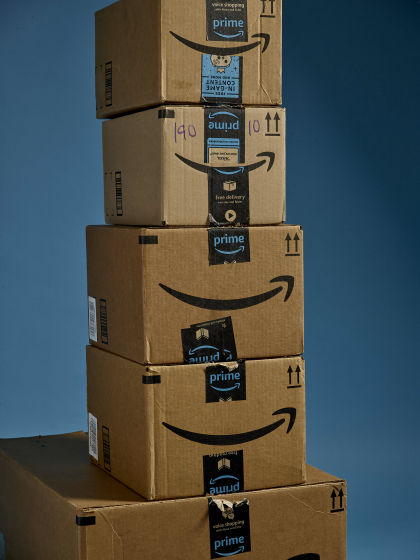What is the strategy to try to monopolize the market using Amazon's 'loop of law'?

by
Amazon is famous for continuing to make a deficit despite huge sales, and it is a topic that 2019 earns more than 1 trillion yen but does not pay 1 yen tax in the United States. We are continuing our own management method. However, it is also pointed out that such Amazon's strategy is aimed at 'making a huge profit after finally breaking down competitors to monopolize the market'. The newly published paper analyzes this Amazon-specific strategy.
Prime Predator: Amazon.co.jp and The Rationale of Below Average Variable Cost Pricing Strategies Among Negative-Cash Flow Firms | Journal of Antitrust Enforcement | Oxford Academic
https://academic.oup.com/antitrust/advance-article/doi/10.1093/jaenfo/jnz006/5419743
This Law Student Has Evidence.-In These Times Is Amazon Violating US Antitrust Laws?
http://inthesetimes.com/article/21850/is-amazon-using-predatory-pricing-in-violation-of-antitrust-laws-monopoly
Amazon's 'not profitable' business model claims that 'flip the switch' is the ultimate goal. In other words, after all competitors and competition services are completely destroyed and Amazon monopolizes the market, one day suddenly, the price of the product is raised and a great deal of profit is obtained. The act of having a dominant company set an extremely low price below the cost of manufacture in order to drive a subordinate company out of the market is called 'predatory pricing.'

by
Predatory pricing is illegal in the United States, but it is considered very difficult to prove in court. The accused person or company must prove that Amazon is priced at a price below the cost of manufacturing, and that the behavior of Amazon favors market monopoly. The famous case that contested predatory pricing was the 1986 Zenith vs. Matsushita case, but few cases have been recognized since then.
Among such, Shaoul Sussman, who is a law graduate of the New York Fordham University, a method that may prove the Amazon is doing the predatory pricing as a paper announcement , and we call the discussion.
Amazon often presents investors with cash flow rather than revenue. Cash flow is often used as proof of predatory pricing, and if Amazon has negative cash flow, it could be considered as an anti-competitive strategy to outperform its rivals.
However, Sussman insisted that 'Amazon is using the GAAP loophole to exclude most of the spending' in the paper. By finance and leasing as an office some of the 28 8 million square feet of land owned by the company, it says that it has acquired the facility by borrowing and lending without paying cash. This lease does not appear in free cash flow as an 'expense.' According to a 2017 report , 'If you add finance and leasing, Amazon's cash flow is $ 1 billion, or about $ 112 billion.'
Sussman points out the possibility that 'Amazon transfers balance sheet figures from one to the other to obscure cash flow figures,' Amazon does not reveal its internal financial structure But, 'If the whole story is revealed, negative cash flow will be shown.'
Amazon already has 100 million Amazon Prime users, and has created a near 'monopoly' that accounts for 45% of all e-commerce. However, successful predatory pricing requires the creation of profits from the monopoly built up by “selling products at significantly lower prices than losses”. In order to make a profit without throwing away this 'low price' part, Amazon is trying to create 'a state where the supplier can not substantially sell things'.

by
Amazon sells not only its own products but also products through wholesalers, with third-party sellers accounting for 58% of the total Amazon marketplace. These third parties can have Amazon manage their inventory by paying for it and ship using a vast logistics network. Amazon's revenue from such “Fulfillment by Amazon (FBA)” and shop charges is increasing year by year, and in the fourth quarter 2018, the third-party sales amounted to $ 13.4 billion (approximately It has grown to 1.5 trillion yen). This means that one-fifth of Amazon's sales come from Marketplace and FBA.
According to Bloomberg , Amazon has ceased buying and selling products directly from thousands of wholesalers and has turned to a form that encourages third party sales. This has allowed Amazon to reduce inventory and shipping costs, as well as collect more marketplace usage fees.
In other words, to summarize Amazon's behavior, the first is to intentionally sell products while making losses, then to reduce costs without changing commodity prices, and to collect the profits of suppliers through the usage fee of the marketplace. Become. It is pointed out that this is 'the definition of the predatory pricing described in the book'.
There are not many options available for people who want to sell things online. Instagram has also released a shopping tool, but there should be few people who bypass Amazon. Amazon can capture even big wholesalers. And Amazon has included in its contract a provision to avoid 'sellers selling things at lower prices than Amazon on other websites' and, theoretically, could lower the search ranking for high priced sellers. It makes it very difficult for sellers to sell at high prices.

by Tim Reckmann
Also, in March 2019, Amazon announced a new policy that 'Products that can not be profited by Amazon stop advertising.' This is a close-out of CRaP (Can't Realize a Profit), and it is considered to be intended to expand third party sellers, as it applies to the company that sells it. However, if this goes back, 'Amazon will not be profitable = there is a group that sells CRaP below the cost of manufacturing.' It can be rephrased that Amazon is focusing more on increasing profits and lowering the cost of CRaP.
Sussman has built a theory that allows companies damaged by Amazon to sue Amazon, and if it actually goes to court, Amazon needs to clarify the unit price of each item Says that it should be Sussman also believes that the Federal Trade Commission can clarify the costs Amazon hides, and that it could enact a law that would control companies trying to predatory pricing in the future.
Related Posts:
in Web Service, Posted by darkhorse_log







